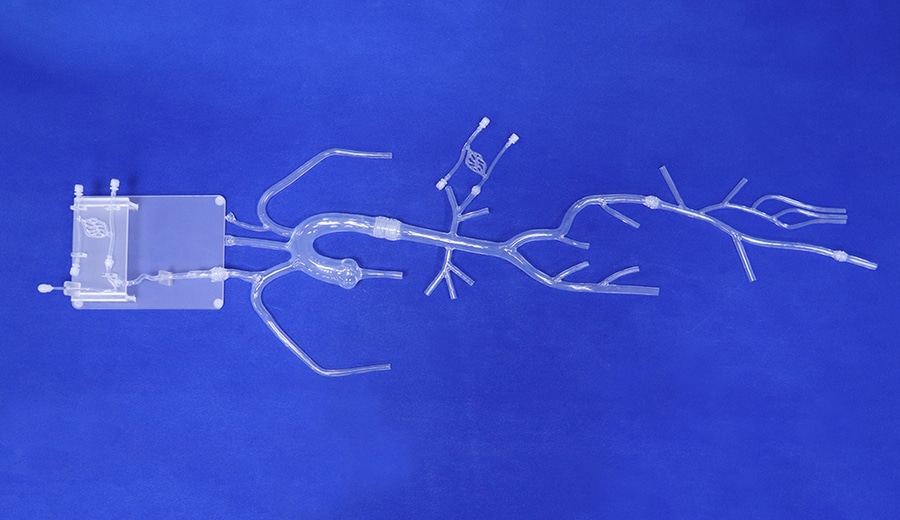
#Industry News
Puncture Techniques for Arteriovenous Fistula
Intracranial Arteriovenous Fistula Model
Introduction:
Arteriovenous fistula (AVF) is a surgical connection between an artery and a vein created to provide vascular access for hemodialysis. Achieving successful puncture of the AVF is crucial for efficient and safe dialysis treatment. In this industry knowledge article, we will delve into the importance of proper puncture techniques for AVF and explore three primary puncture techniques specifically designed for internal fistulas.
Importance of Puncture Techniques for AVF:
The puncture technique used during cannulation plays a pivotal role in maintaining the long-term patency and function of the AVF. Proper puncture techniques minimize the risk of complications such as stenosis, infection, thrombosis, aneurysm formation, and bleeding. It allows for effective blood flow during hemodialysis while enhancing patient comfort.
Three Puncture Techniques for Internal Fistulas:
Rope Ladder Technique:
The rope ladder technique involves puncturing the AVF needle sites in a sequential, alternating manner. This technique ensures even distribution of cannulation points along the length of the fistula, reducing the risk of stenosis and localized trauma. By using this technique, needle insertion sites are rotated during each dialysis session, giving the previous puncture sites an opportunity to heal and minimizing the risk of aneurysm formation.
Buttonhole Technique:
The buttonhole technique, also known as the constant-site technique, utilizes the same needle insertion sites repeatedly. Unlike the rope ladder technique, the buttonhole technique creates a track or tract over time, resulting in a well-defined pathway with reduced pain sensation during insertion. Through regular use of the same sites, a fibrous tract is formed, facilitating accurate needle placement and minimizing complications. Careful sterilization and aseptic techniques are essential when using the buttonhole technique to prevent infection.
Area Puncture Technique:
The area puncture technique involves selecting a specific zone or area for needle insertion. Instead of targeting the same individual sites repeatedly, a larger area is designated for puncture. This technique can help to distribute the trauma caused by needle insertion over a larger surface area, potentially reducing the risk of localized complications. It may be particularly helpful for patients with thin or fragile AVF walls.
Factors to Consider:
When selecting a puncture technique, several factors should be considered, including the patient’s individual anatomy, quality of the fistula, presence of aneurysms or stenosis, patient preference, and the healthcare provider’s expertise. The decision should be made collaboratively between the patient, nephrologist, and dialysis healthcare team to optimize outcomes.
Conclusion:
Proper puncture techniques for arteriovenous fistula are critical for ensuring successful hemodialysis treatment and maintaining the long-term patency and functionality of the AVF. The rope ladder technique, buttonhole technique, and area puncture technique are three commonly used approaches for cannulating internal fistulas. Each technique has its advantages and considerations, and the choice should be based on the individual patient’s needs and condition. Regular training, adherence to aseptic techniques, and ongoing evaluation of the puncture sites are essential to optimize AVF function and minimize complications. Close collaboration between healthcare providers and patients is vital to achieving the best outcomes in AVF management.





